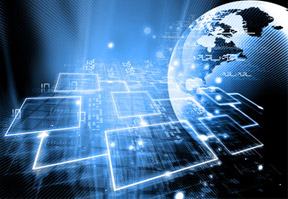While mobile broadband proliferation, lower cost of hardware and connectivity, and maturity of cloud computing are pushing us to usher in the Internet of Things (IoT) era, Bhavna Sharma says that a lot of challenges still need to be addressed to understand this new market and the gaps that need to be filled.
With machine-to-machine communication set to become the nervous system of globe, the IoT market faces not only technical challenges in implementation and interoperability, but also business issues related to standardisation, interoperability, collaboration, pricing, security and regulations in different countries.
Standardised system needed

M2M involves numerous sectors such as the smart home, smart power grid, electronic medical care, intelligent buildings, and intelligent transportation, to name a few. Every sector comes with complex and diversified standards. Moreover, industry standards differ from country to country. From the perspective of the standards organisations related to communications, the international ones like 3GPP, IEEE, ETSI, ITU and IETF as well as local ones in China like CCSA and CESI are all researching and developing M2M-related standards.
To be successful globally, M2M needs a common framework on which all services and devices can interoperate and scale, and be widely available, with maximum achievable efficiency. Applications can share a common infrastructure environment and network transitions within its horizontal architecture, while standardised software and hardware interfaces and protocols will ensure the interoperability of all system elements.
There has been a milestone which has been achieved recently by major standards development organisations, including ETSI, ARIB, ATIS, CCSA, TIA, TTA, TTC and Open Mobile Alliance, where they have agreed on a common M2M service layer, oneM2M, as part of a global initiative to drive M2M standardisation. This will develop globally agreed M2M end-to-end specifications and reports, with a focus on service layers using common use cases and architecture principles. It is a good start in terms of initial efforts, however, keeping in view the vastness of the M2M, there is a long way to go in terms of freezing the standards.
Fragmented state of the market
The whole ecosystem faces numerous implementation challenges. Development of the global M2M market is slow due to the fragmented state of current M2M solutions. Existing M2M solutions are highly dedicated to singular applications, and do not clearly express a global perspective in design and architecture. For example, smart meters, which come from the first breed of M2M solutions, mostly address electric metering-related needs. They are not currently interconnected with any other similar solutions to let the metering data be used for a bigger and more comprehensive solution.
Interoperability between devices and machines is another challenge. Not all devices communicate in the same way or talk with the same protocols. This fact is not well understood by many service providers. Neither do they have the same capabilities. This may hinder the effectiveness of M2M and the time required for M2M to manifest its full potential.
And while there are many different ways to connect these devices to the internet, service providers are deploying their products without considering interoperability, thinking only about how they should sell devices to consumers. To let the IoT showcase its true ability, these market players shall have to move and think beyond such mental blocks.
Business model, legal risks, regulatory hurdles
The traditional ‘user pay’ model does not work on end users when it comes to M2M. Unlike ‘per call charging’ in the traditional telecom world, consumers would not be willing to pay for a medicine bottle with device-tracking capabilities and be charged 10 cents every time it is opened. The charging model in the M2M world will be based on ARPD (Average Revenue per Device) instead of ARPU (Average Revenue per User). That makes the business modelling for M2M a challenge in itself.
The pervasive nature of monitoring and collection with M2M could lead to privacy and data security issues, bringing up concerns about the use and disclosure of the user’s personal information. There are also possibilities for personal information to be used to market goods and services based on individual’s behavioural patterns and preferences; this can be seen as a warning. However, data protection regulations may help restrict the delivery of personal data to M2M.
Of course, there will be other regulatory issues such as those involving roaming. Operators collaborate with others across the globe to provide wider roaming coverage and, as a result, the location of M2M devices running on these networks may not always be identified. As such, operators may not be able to comply with service level agreements stipulated by their local regulators.
Bhavna Sharma describes herself as a telecom technology evangelist with 12 years of industry experience. She works as a solution architect with Ericsson.
Bhavna can be reached via Twitter at: @BhavnaSharma99










